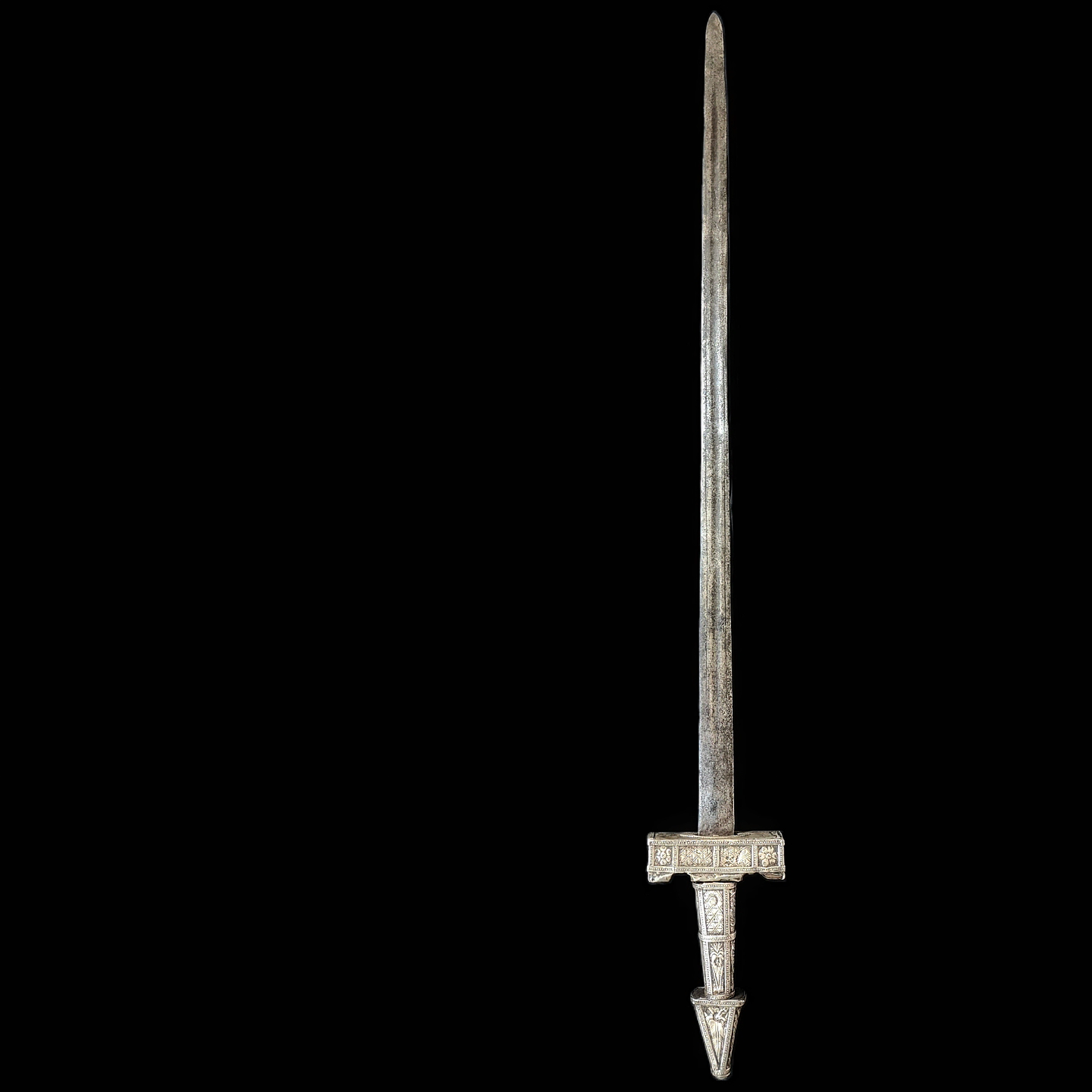A Fine & Rare Berber Sword
A Fine & Rare Berber Sword
Berber / Arab
Beylik of Tunis (Tunisia) - Ottoman Tripolitania (Libya)
Blade: 18th century
Hilt: 19th century
Steel, wood, silver alloy
Blade: 87,6cm
Hilt & Blade: 108,6cm
Hilt, Blade, Sheath: -cm
Collection Date: 2023
Collection Number: 366
Ex. Tajan: Paris, France (2023)
Ex. French Private Collection (2023)
A rare sword of the nomadic Berbers (Amazigh) of North Africa attributed to the Maghreb region near Tunisia and Libya where these sword types were most prevalent. This one is an exceptional example decorated with silver sheet adornment and an old European blade.
The blade being an early European trade blade from the late 17th - 18th century. It is straight, double- edged with a central fuller and two shallow outside grooves extending to the pointed tip. No markings can be found. The hilt is wood covered in silver repoussé and filigree of floral motifs, animals, and linear designs both in waves and crosshatching. On one side is a camel under a crescent moon, the Berber symbol of wealth and prestige. The reverse, a fish and rooster. The fish is a protective symbol to ward off the evil eye while the rooster promotes fertility. There are also unidentified stamps throughout the hilt, probably the maker's mark. Another possibility could be the Ottoman seal of the Regency of Tunis or Tripolitania, but this is unverified.
Berber swords are not very common and usually made of wood or horn and often in poor condition from age. They can be found with very old European blades on them, sometimes as heirolooms passed down through the generations. This example is one of two that I know of with a silver sheet hilt. The question exists if other example's hilts were also covered and lost to time, sometimes seen with brass repoussé hilts over wood handles on the flyssa swords. The blade is much older, 18th century, while the hilt is 19th century. The decorative manner implies that the owner was of a high social status and wealthy. A rare sword, the finest example that I have found so far of this type.
Photograph 10: Tripoli Bazaar, 1898 - 1906.









